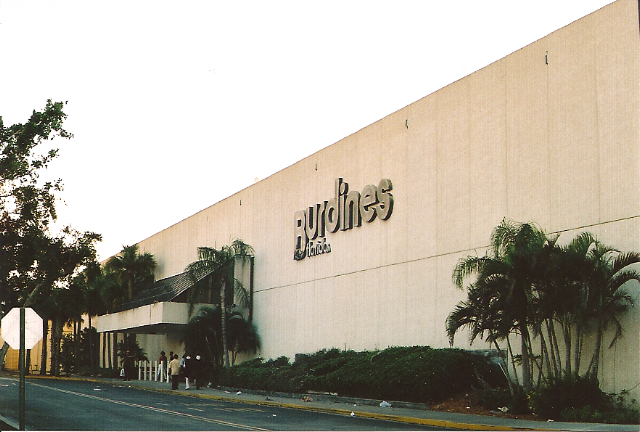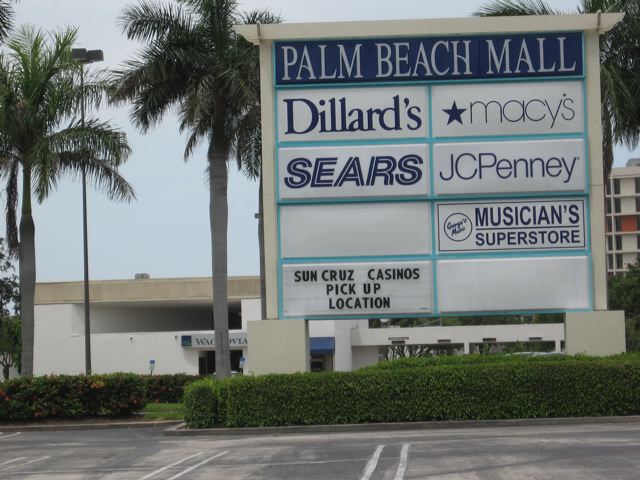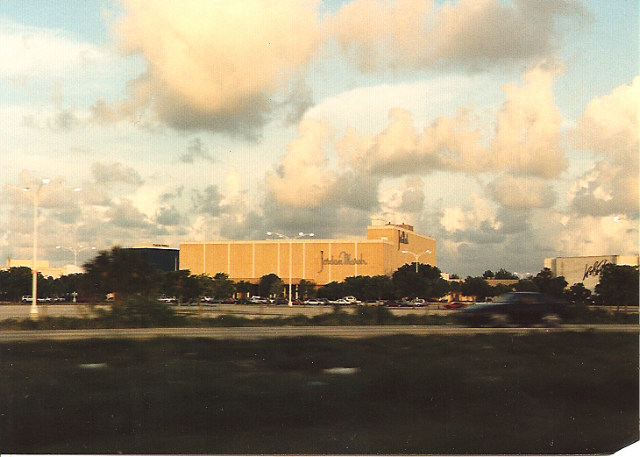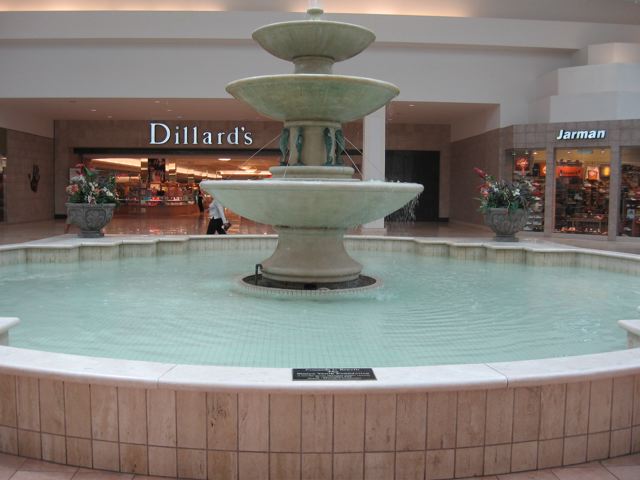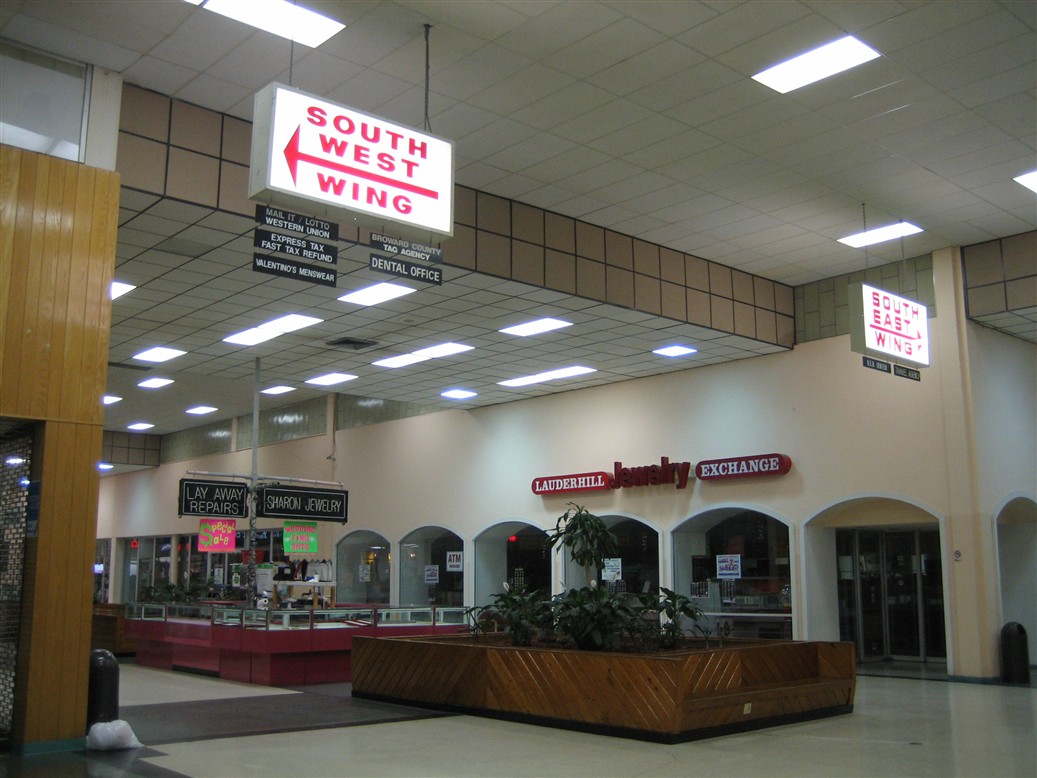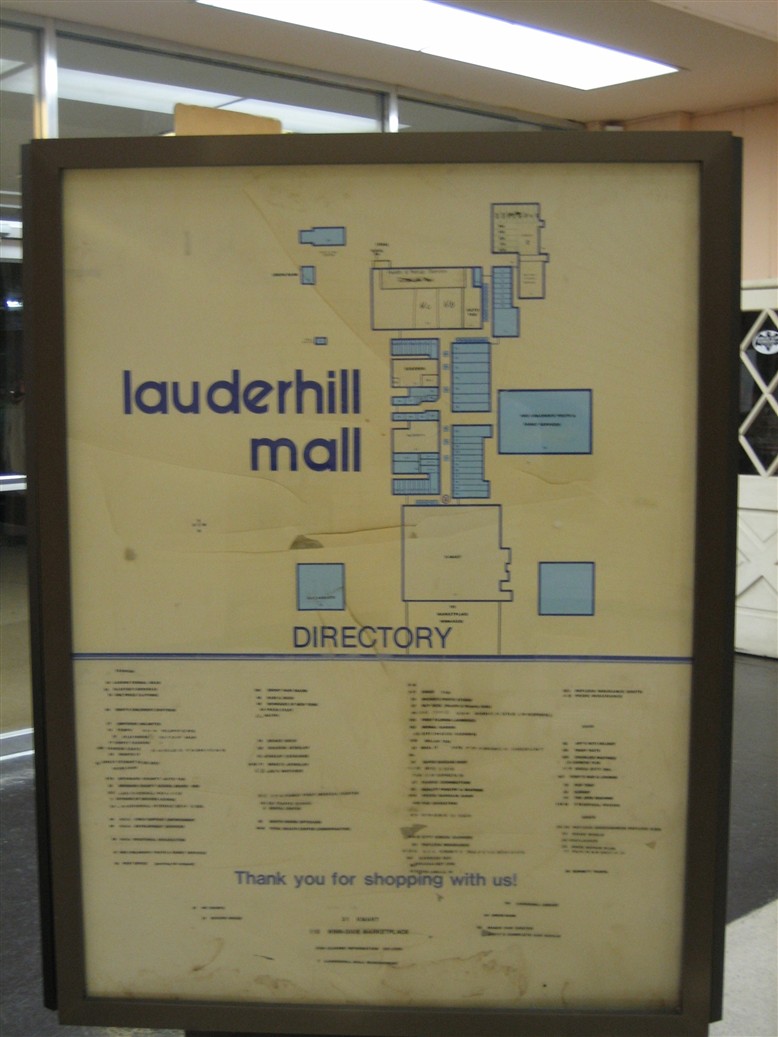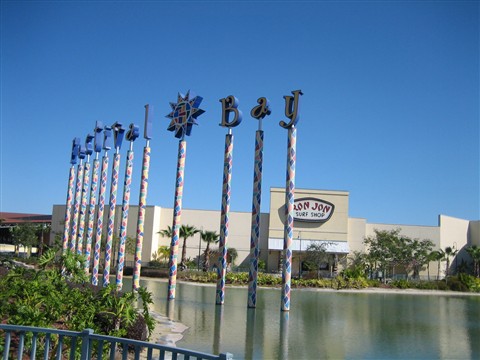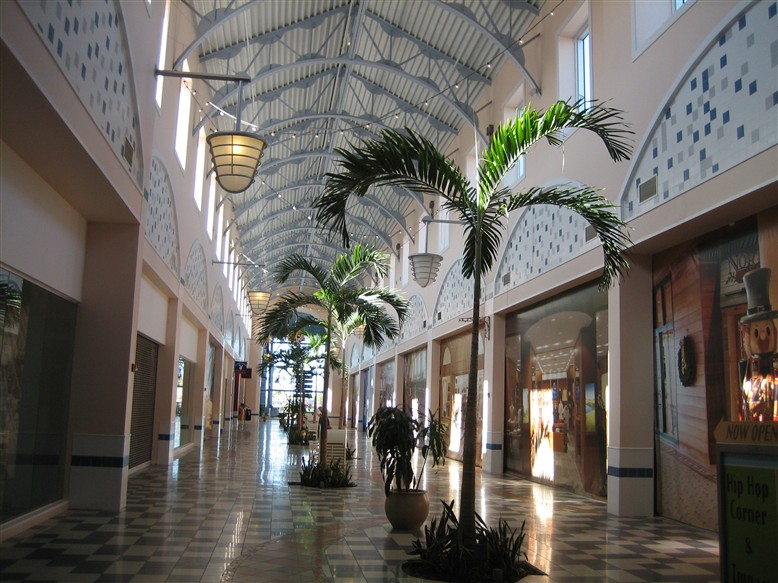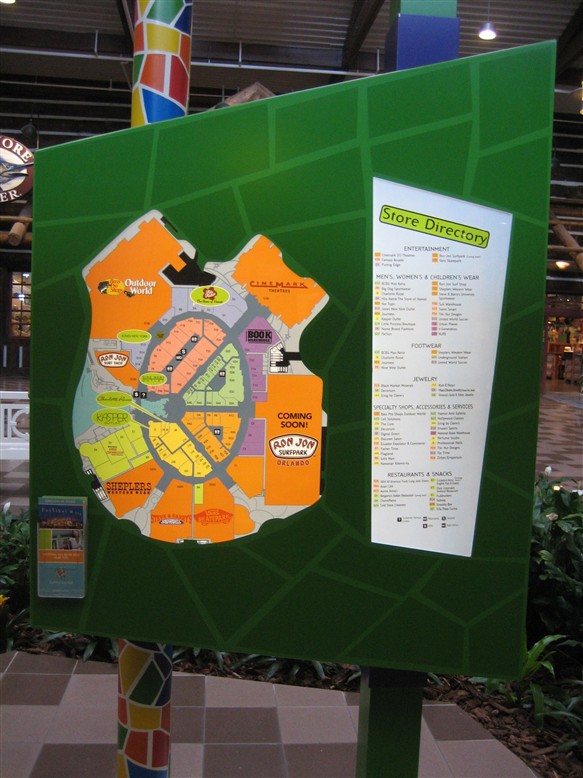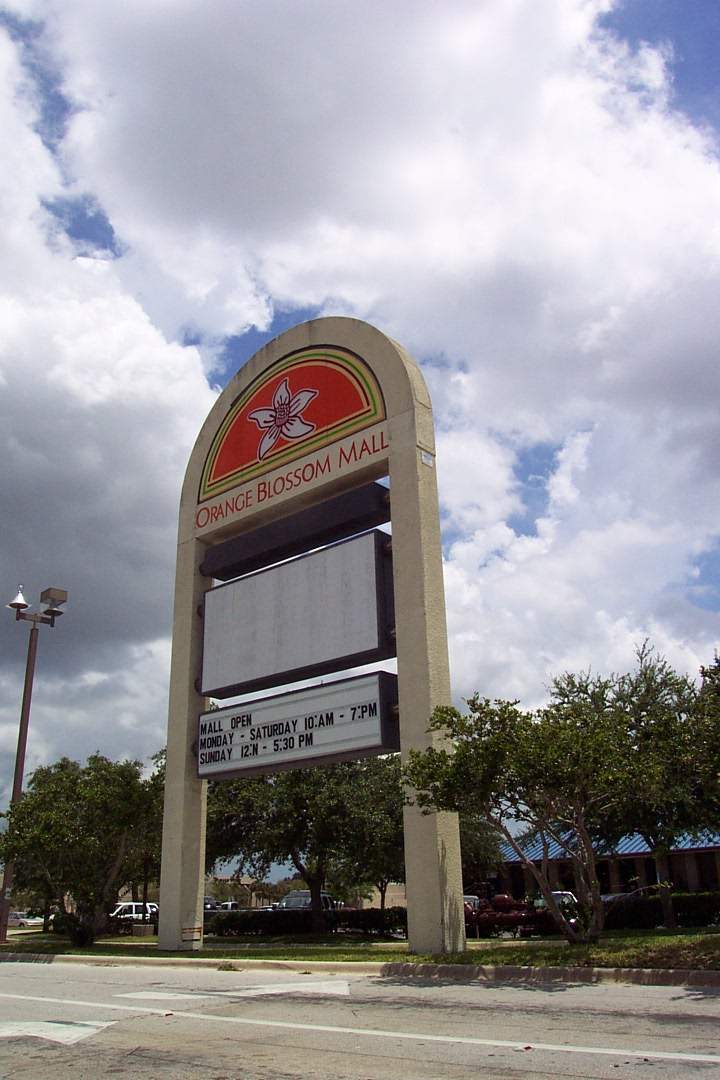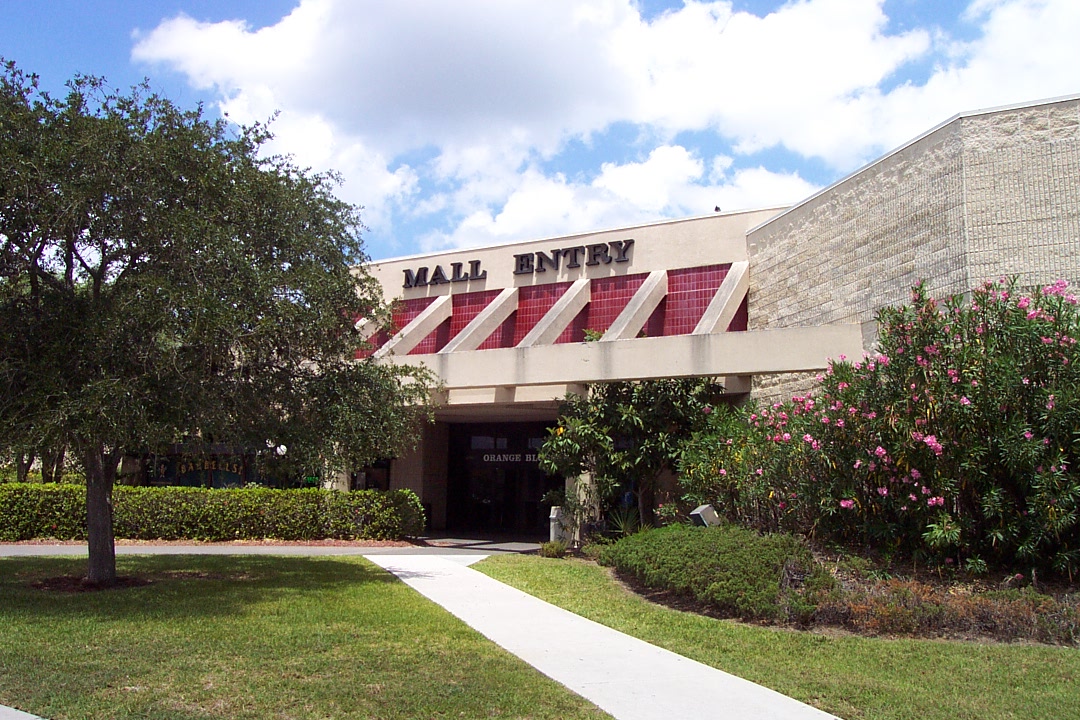This one’s long gone, so enjoy.
Opened in August 1976, Tampa Bay Center was one of Tampa Bay’s biggest and brightest shopping destinations. Centrally located north of downtown Tampa along Martin Luther King Jr Blvd (called Buffalo Avenue then) east of Dale Mabry Hwy, Tampa Bay Center was next to Tampa Stadium, home of the NFL’s Tampa Bay Buccaneers. It was the place to be during the late 1970s and 1980s; but, despite rapid growth in the fruitful Tampa Bay area over the coming years and decades, Tampa Bay Center’s fate was ultimately sealed by far too much competition.
When it opened, Tampa Bay Center had over 700,000 square feet of retail space and two anchors: Tampa’s first Burdines store and Sears, which actually opened before the mall did, in March 1976. The two anchors at Tampa Bay Center were arranged at each end of the structure, and a two-level mall corridor connected them.
 Due to the mall’s early success, Montgomery Ward was added as a third anchor near center court in 1980, bringing the center to almost 900,000 square feet. It was the first and only major addition to the mall during its entire history.
Due to the mall’s early success, Montgomery Ward was added as a third anchor near center court in 1980, bringing the center to almost 900,000 square feet. It was the first and only major addition to the mall during its entire history.
A piece of random trivia: Tampa Bay Center opened one day after another long-gone Tampa mall, Eastlake Square, which was similarly sized and located 6.5 miles away.
Designed by Maryland-based Rouse, Tampa Bay Center featured a tall, latticework trussed ceiling design, flanked on both sides by skylights, which bathed the entire center in natural light during a time when dark, drab colors and drop ceilings were common. However, the dark tile floors at Tampa Bay Center were more period-appropriate, as were the fountains and the tall trees placed throughout the first level. In addition, a glass elevator at center court was the mall’s centerpiece, and a unique-for-Florida design included a slope to the property, which meant shoppers could enter either level of the mall directly from the parking lot.
In terms of competition, Tampa Bay Center’s biggest foe was nearby WestShore Plaza, which opened in 1967 as the Tampa Bay area’s first mall and was located only a couple miles away. WestShore and Tampa Bay Center had complementary anchors and thrived nearly side by side for years; however, WestShore was always the more upscale, more conveniently located counterpart to Tampa Bay Center’s stadium-adjacent austerity. Eventually, WestShore began to emerge as the winner while Tampa Bay Center slowly spiraled downward.
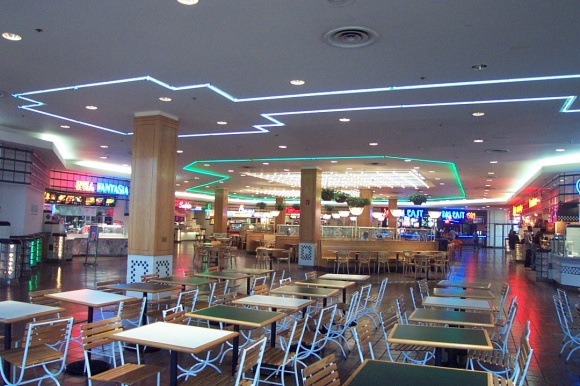 By the late 1990s, Tampa Bay Center was in serious decline. WestShore Plaza announced plans for a dramatic expansion, beginning in 1997, which was basically the beginning of the end for Tampa Bay Center. A larger WestShore, directly on I-275 and centrally located within the Tampa Bay area, would spell disaster for Tampa Bay Center.
By the late 1990s, Tampa Bay Center was in serious decline. WestShore Plaza announced plans for a dramatic expansion, beginning in 1997, which was basically the beginning of the end for Tampa Bay Center. A larger WestShore, directly on I-275 and centrally located within the Tampa Bay area, would spell disaster for Tampa Bay Center.
In addition to the WestShore expansion, a huge brand new mall, Brandon Town Center, opened in 1995 to serve the fast-growing sprawl in eastern Tampa, and in 1999 another massive mall called Citrus Park Town Center opened to serve Tampa’s north and northwest areas.
Meanwhile, in June 1998, Burdines announced they were leaving Tampa Bay Center, due both to building a new Citrus Park store as well as having a store just a few miles away at WestShore. For eight years, Burdines had operated stores at both WestShore Plaza and Tampa Bay Center after Burdines took over the Tampa-based Maas Brothers chain in 1991, which had a WestShore location. In 1999, Burdines closed their Tampa Bay Center store in favor of opening one at the new Citrus Park Town Center.
In late 2000, Montgomery Ward issued Tampa Bay Center another blow, by going out of business nationwide. With only Sears remaining, stores began leaving in droves, favoring either Citrus Park or WestShore locations.
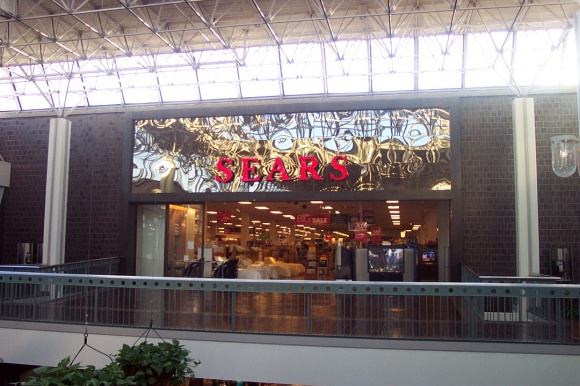 As if all this competition weren’t enough already, regional mall-developer Taubman swooped in and decided to develop yet another large mall, located adjacent to Tampa’s airport and directly in between Tampa Bay Center and WestShore Plaza – only a mile from each. Called International Plaza and Bay Street, Tampa’s newest mall to date was another large, two-level behemoth, and with Dillard’s, Nordstrom, Neiman Marcus, and Lord and Taylor as anchors, it was proposed to be even more upscale and successful than WestShore.
As if all this competition weren’t enough already, regional mall-developer Taubman swooped in and decided to develop yet another large mall, located adjacent to Tampa’s airport and directly in between Tampa Bay Center and WestShore Plaza – only a mile from each. Called International Plaza and Bay Street, Tampa’s newest mall to date was another large, two-level behemoth, and with Dillard’s, Nordstrom, Neiman Marcus, and Lord and Taylor as anchors, it was proposed to be even more upscale and successful than WestShore.
With International Mall and Bay Street set to open in 2001, Tampa Bay Center faced an incredibly challenging uphill battle. By early 2001, many stores had already left Tampa Bay Center, and by Summer 2001 the remaining few stores were on month-to-month leases.
The final death knell came in Fall 2001 when Sears, Tampa Bay Center’s final anchor, announced it was leaving. Recognizing they were underwater in the deluge of competition and no longer under the obligation to maintain the 892,000 square-foot mall after Sears announced its departure, Rouse kicked out the mall walkers and whatever stores were left and closed the interior of the mall in January 2002. Sears, the final anchor at Tampa Bay Center, closed in September 2002. Though, with the mall already closed, Sears wasn’t anchoring much. Sears left due to opportunity: International Plaza lured Dillard’s away from WestShore, WestShore had a vacancy, and Sears saw an opportunity to jump from a sinking (sunken?) ship.
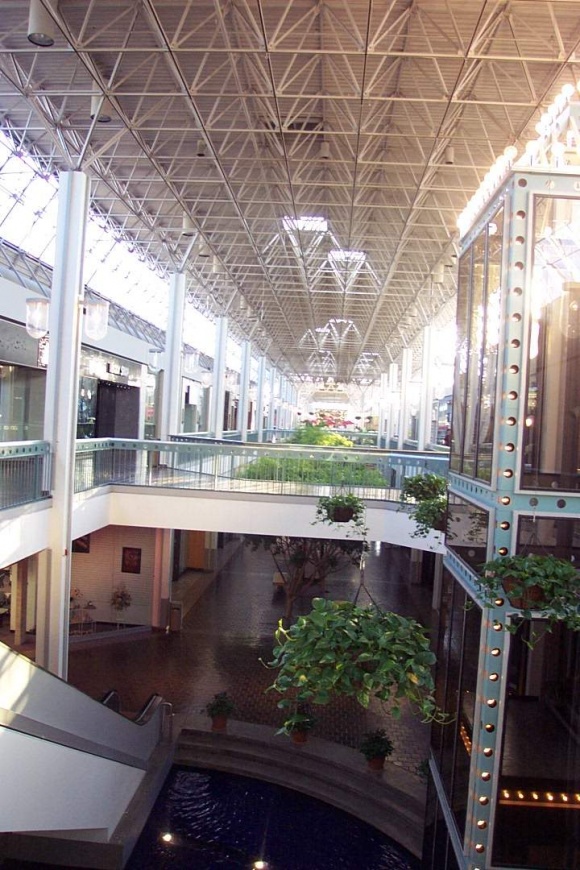 After Sears left, Rouse decided to market the mall for sale, and DeBartolo indicated interest in purchasing the mall to build an open-air retail center, but ultimately declined. Rouse came to the conclusion the site was no longer viable for retail given so much area competition. Rouse then sold the mall on December 31, 2002 for $22.8 million in cash to the Glazer family, owners of the Tampa Bay Buccaneers, who intended to turn about half the site into a training facility to complement the neighboring stadium.
After Sears left, Rouse decided to market the mall for sale, and DeBartolo indicated interest in purchasing the mall to build an open-air retail center, but ultimately declined. Rouse came to the conclusion the site was no longer viable for retail given so much area competition. Rouse then sold the mall on December 31, 2002 for $22.8 million in cash to the Glazer family, owners of the Tampa Bay Buccaneers, who intended to turn about half the site into a training facility to complement the neighboring stadium.
Of course, this meant no more mall, and Tampa Bay Center was demolished 2005. The Bucs moved into the training facility in time for their 2006 season. The rest of the site became home to an overflow lot for Bucs games, and in 2007 the Hillsborough Area Regional Transit West Tampa Transfer Center opened to wow bus crowds near and far, but probably mostly near?
I visited Tampa Bay Center in May 2001 and took the pictures featured here, a short time before the mall closed permanently – please ignore my teenage mug in one of them. Tampa Bay Center, while once a successful retail pillar of Tampa, ultimately succumbed to one of the fiercest levels of competition we’ve seen yet. As usual, feel free to leave your comments and experiences.
Elsewhere on the web:
- Tampapix.com has a great illustrated write-up of the mall’s history
- Deadmalls has a couple exterior photos of the abandoned Burdines store.
- Tampa Bay Center’s Facebook page
Photos from May 2001:
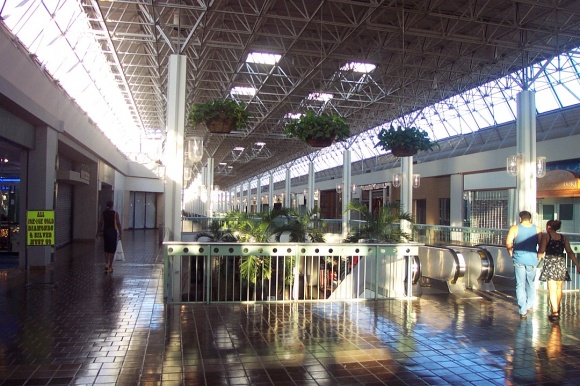 Opened in August 1976, Tampa Bay Center was one of Tampa Bay’s biggest and brightest shopping destinations. Centrally located north of downtown Tampa along Martin Luther King Jr Blvd (called Buffalo Avenue then) east of Dale Mabry Hwy, Tampa Bay Center was next to Tampa Stadium, home of the NFL’s Tampa Bay Buccaneers. It was the place to be during the late 1970s and 1980s; but, despite rapid growth in the fruitful Tampa Bay area over the coming years and decades, Tampa Bay Center’s fate was ultimately sealed by far too much competition. When it opened, Tampa Bay Center had over 700,000 square feet of retail space and two anchors: Tampa’s first Burdines store and Sears, which actually opened before the mall did, in March 1976. The two anchors at Tampa Bay Center were arranged at each end of the structure, and a two-level mall corridor connected them.
Opened in August 1976, Tampa Bay Center was one of Tampa Bay’s biggest and brightest shopping destinations. Centrally located north of downtown Tampa along Martin Luther King Jr Blvd (called Buffalo Avenue then) east of Dale Mabry Hwy, Tampa Bay Center was next to Tampa Stadium, home of the NFL’s Tampa Bay Buccaneers. It was the place to be during the late 1970s and 1980s; but, despite rapid growth in the fruitful Tampa Bay area over the coming years and decades, Tampa Bay Center’s fate was ultimately sealed by far too much competition. When it opened, Tampa Bay Center had over 700,000 square feet of retail space and two anchors: Tampa’s first Burdines store and Sears, which actually opened before the mall did, in March 1976. The two anchors at Tampa Bay Center were arranged at each end of the structure, and a two-level mall corridor connected them.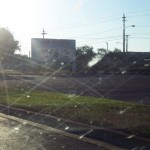
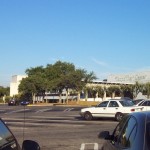
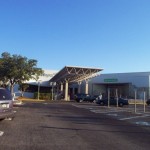
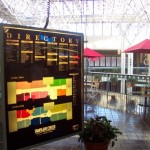
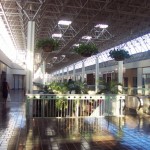
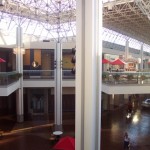
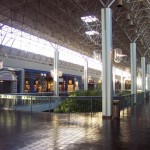
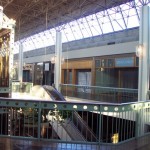
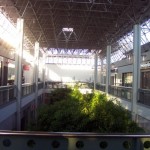
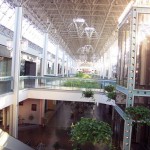
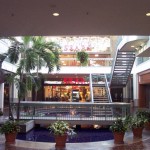
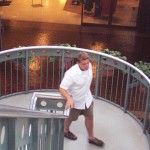
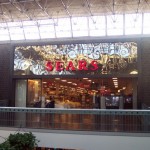
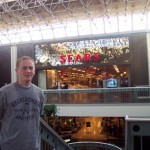
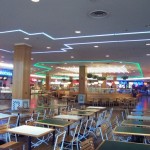
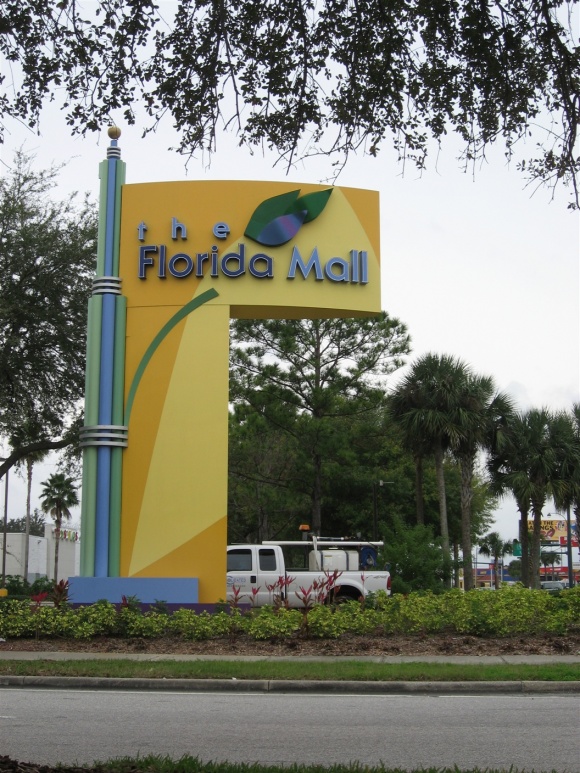 If you’ve ever visited the Orlando area as a tourist, odds are you’ve been very close to Florida Mall. Located just minutes from Sea World, Disney, and Universal, Florida Mall is the largest mall in the Orlando area and one of the closest malls to all these attractions. In fact, from 1986-2002, it was the only major mall in south Orlando. Since its grand opening, the massive Florida Mall has enjoyed immense success serving not only locals, but tourists from around the country and across the globe.
If you’ve ever visited the Orlando area as a tourist, odds are you’ve been very close to Florida Mall. Located just minutes from Sea World, Disney, and Universal, Florida Mall is the largest mall in the Orlando area and one of the closest malls to all these attractions. In fact, from 1986-2002, it was the only major mall in south Orlando. Since its grand opening, the massive Florida Mall has enjoyed immense success serving not only locals, but tourists from around the country and across the globe.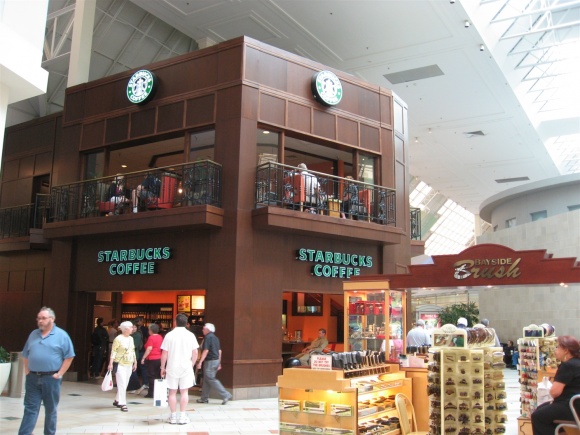
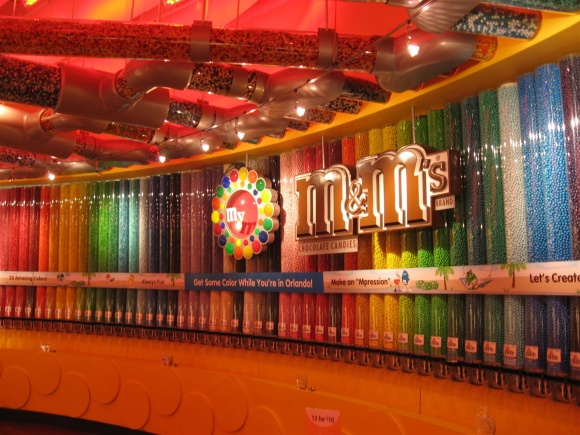
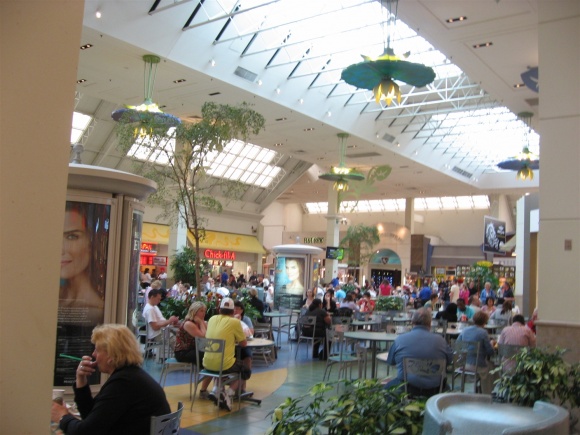
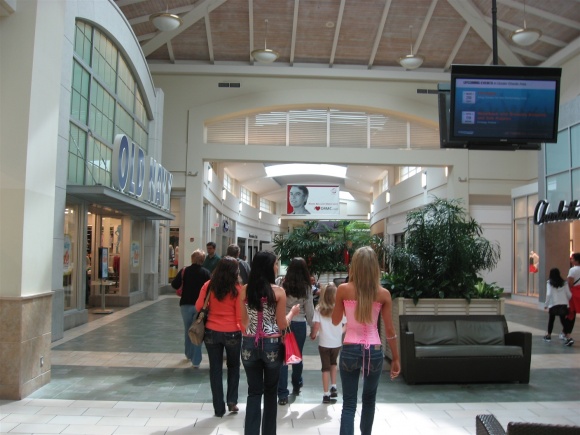
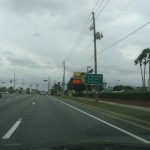
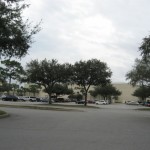
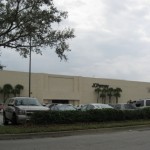
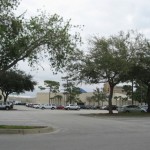
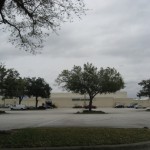
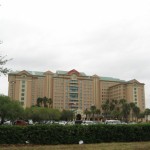
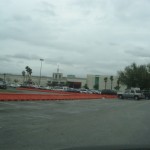
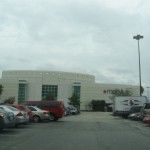
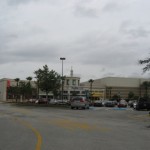
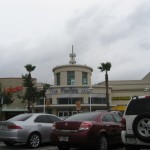
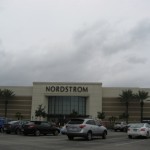
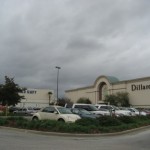
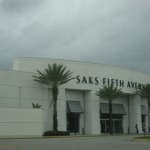
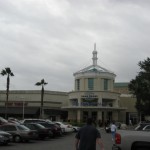
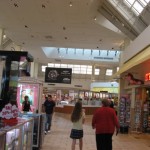
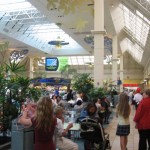
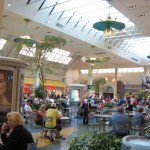
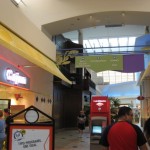
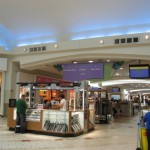
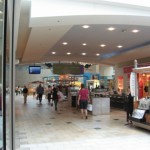
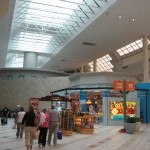
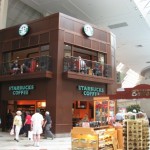
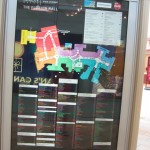
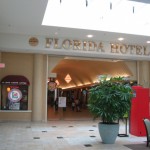
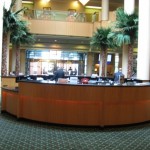
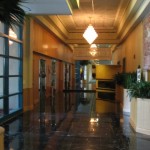
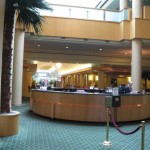
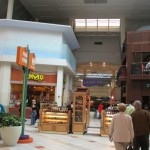
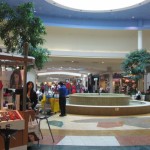
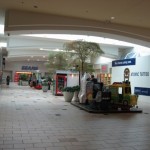
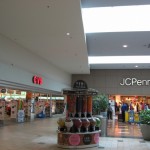
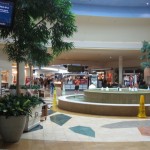
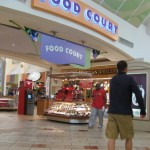
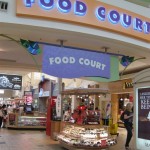
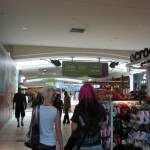
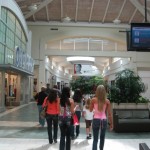
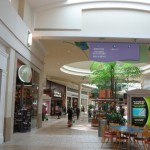
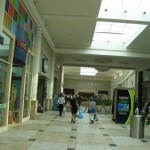
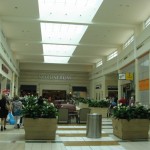
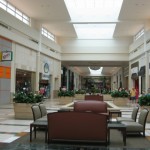
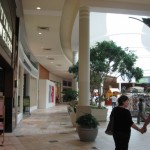
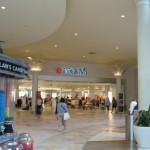
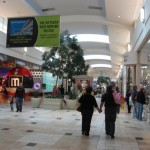
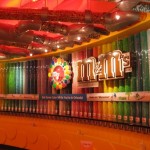
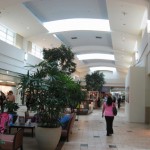
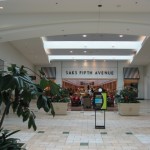
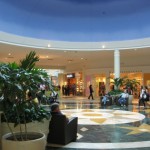
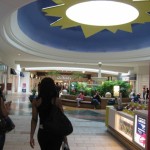
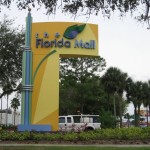
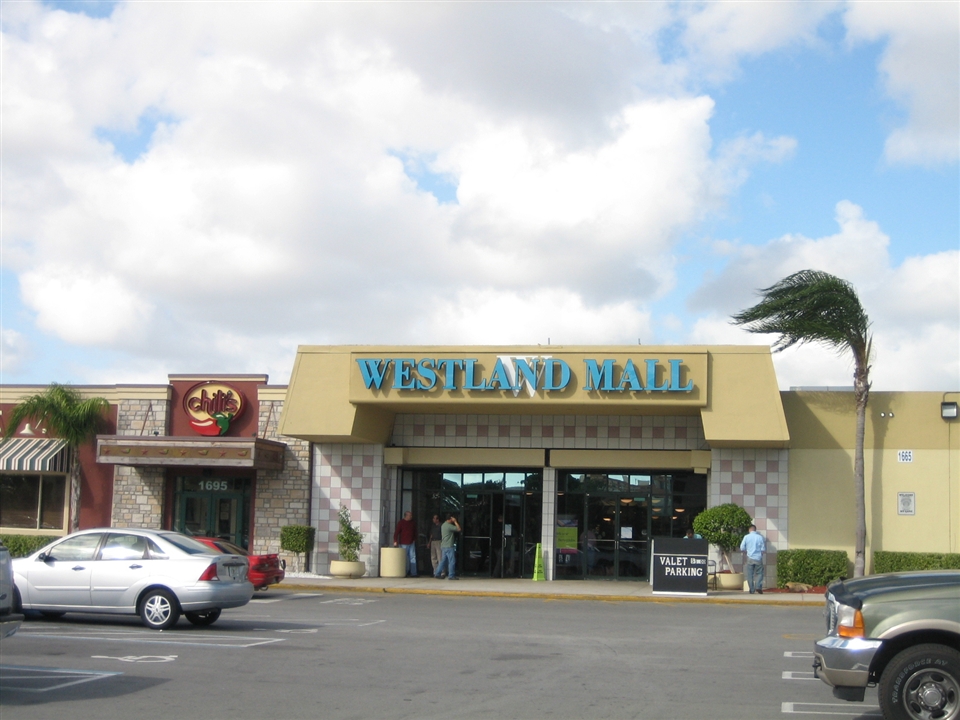

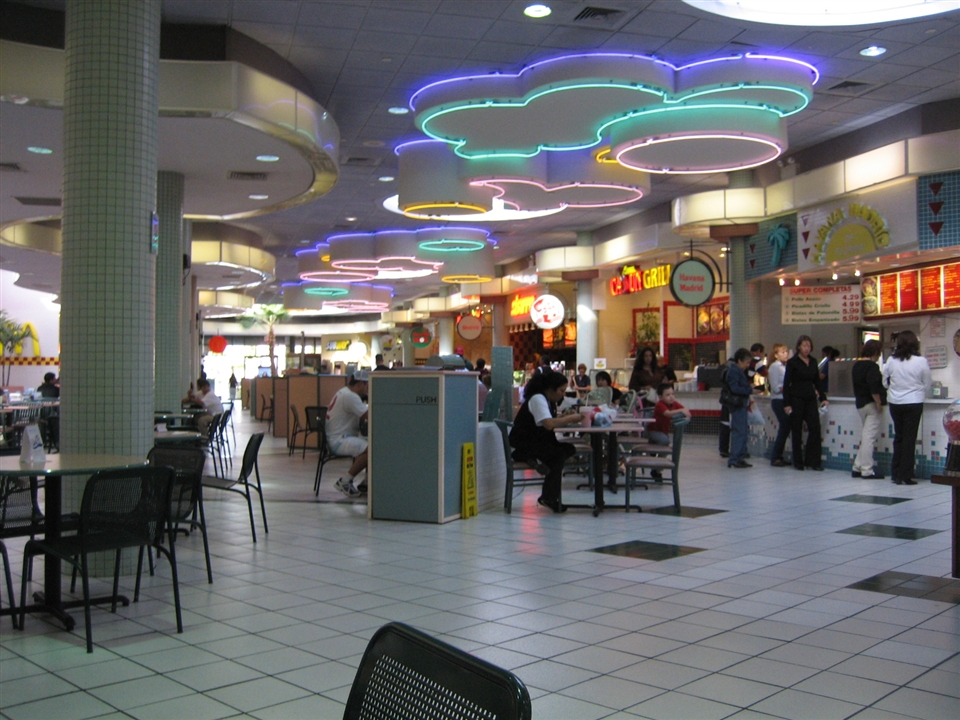
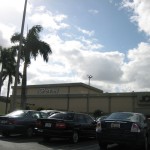
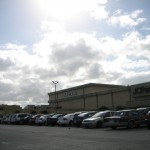
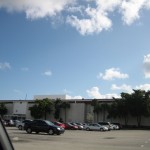
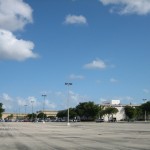
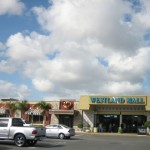
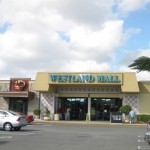
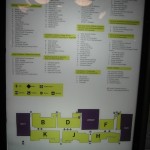
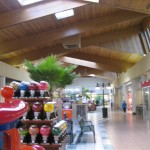
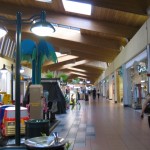
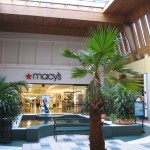
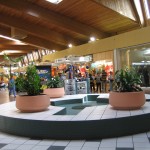
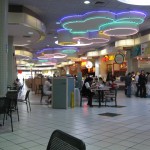
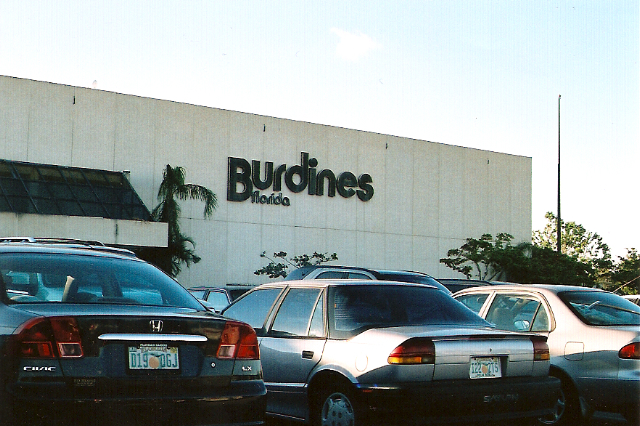 When the Palm Beach Mall opened in 1967, it was billed as the largest enclosed mall in the Southeast. Located in West Palm Beach, FL, the mall helped serve a community who didn’t necessarily need the opulence of Palm Beach’s Worth Avenue shopping area. It opened amidst spectacular gardens and fountains and was anchored by the Miami-based Jordan Marsh, JCPenney and the number three of the three Miami stores, Richards.
When the Palm Beach Mall opened in 1967, it was billed as the largest enclosed mall in the Southeast. Located in West Palm Beach, FL, the mall helped serve a community who didn’t necessarily need the opulence of Palm Beach’s Worth Avenue shopping area. It opened amidst spectacular gardens and fountains and was anchored by the Miami-based Jordan Marsh, JCPenney and the number three of the three Miami stores, Richards.